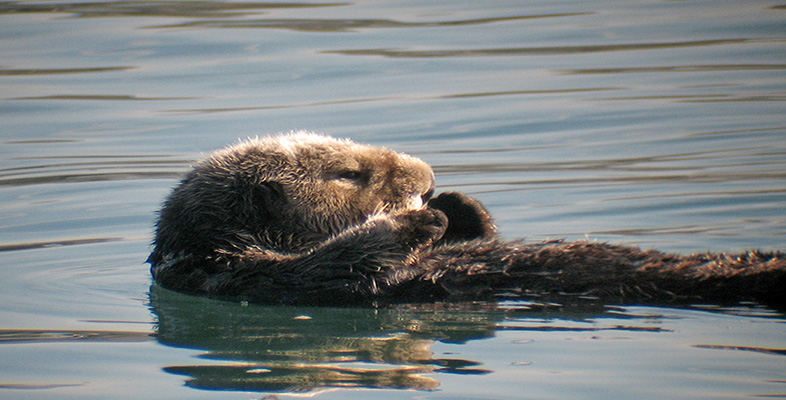4 The evolution of whales
4.1 The rate of evolution
I now want to move away from looking at the challenges facing all aquatic mammals, to examine very briefly what we know about the evolutionary history of the cetaceans. This group has travelled furthest from its terrestrial roots and made the fullest adaptation to life in the sea.
Since mammals evolved on land, it has long seemed reasonable to suggest that the origin of whales must have involved an evolutionary transition from the land to the water. But how can we explain the fact that living whales are so well adapted to a life in the water, and so far removed in form and behaviour from most other mammals? There are two main problems. First, if evolution proceeds through the build-up of numerous small changes, it is difficult to see how the wide gap between terrestrial mammals and whales could have been bridged - even given the enormous amounts of time involved. Second, there is the problem of 'intermediate forms': that is, the nature of the animals that must have filled the gap.
In the 1930s, the American biologist George Gaylord Simpson noted something interesting about the apparent rate of evolutionary change in whales. He examined the fossils of some primitive whales, which had been dated back to the Eocene (about 50 million years ago), and compared the anatomy of these early proto-whales with the anatomy of their living descendants.
One can measure the average rate of evolution for various anatomical features in the 50 million years it took to modify [primitive] Eocene whales into fully modern forms. Let us then take that measured rate of evolution within whales and calculate how long it would have taken for Eocene whales to evolve from terrestrial ancestors. Extrapolating back, it would have taken at least 100 million years (possibly even considerably more) for the transition from terrestrial ancestor to aquatic, primitive whale descendant to have occurred - assuming, that is, that whales evolved from terrestrial ancestors at the same rate of evolution we see in the 50 million years that elapsed between Eocene and modern whales.
(N. Eldredge (1991) Fossils: The Evolution and Extinction of Species, Aurum Press, p. 168)
This is a problem: 100 million years before the Eocene takes us back before the evolution of mammals as a group (let alone the first mammals to take to the water).
Question 5
Can you identify a possible solution to this problem? (Hint: think about the assumption noted in the quotation.)
Answer
Perhaps the rate of evolution was not the same for the transition from terrestrial ancestor to primitive Eocene whale as it was for the later transition from Eocene whale to modern whales.
Simpson suggested that the rate of evolution had not been the same - that the large-scale transformations needed for a mammal to move from the land to water might have occurred more quickly than the subsequent 'fine-tuning' from primitive whale to modern whale. Some biologists see this as a general pattern, in which periods of rapid evolutionary change in small, isolated populations give rise to major new groups of animals, and are followed by longer periods of relative stability in which the rate of change to the new design is fairly modest. Niles Eldredge and the late Stephen Jay Gould have coined the term 'punctuated equilibria' for this controversial theory.
